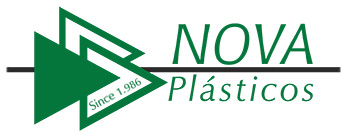Nylon 6.6
Chemical Designation: Polyamide 6.6
DIN Abbreviation: PA 66
Colour, Filler: Opaque
Stock Availability: Standard length 3 metres, also cut to size
Rod 4 – 200 mm dia
Plate 5 – 100 mm thick
Tube up to 300 mm OD
Profile
Finished parts, machined or injection moulded
Nylon 6.6 is a semicrystalline engineering thermoplastic with universal applications.
Main characteristics: good sliding properties – strong
abrasion resistant – tough
resistant to many oils, electrically insulating
grease, diesel, petrol, … – easily machined
easily bonded and welded
- Preferred Fields: Mechanical engineering, automotive engineering, transport and conveyor technology, textile, packaging and paper processing machinery, printing and dispensing machinery, household appliances, electrical engineering, precision engineering
Applications: gears – friction bearings
friction strips – conveyor screws
bushes – cams
piston guides – pulleys
castors – plug parts
Nylon 6.6 – Poliamida 6.6
The following information corresponds with our current knowledge and indicates our products and possible applications. We cannot give a legally binding guarantee of certain properties or the suitability for a specific application. Existing commercial patents must be observed. A definitive quality guarantee is given in our general conditions of sales. Unless otherwise stated, these values represent averages taken from injection moulding samples. We reserve the right of technical alterations.
| Properties | Unit | Test Method DIN ASTM | Dry | Wet * | ||
| Mechanical | ||||||
| Density | g/cm³ | 53 479 | 1.14 | |||
| Tensile strength at yield | MPa | 53 455 | 90 | 70 | ||
| Tensile strength at break | MPa | 53 455 | ||||
| Elongation at break | % | 53 455 | 40 | 150 | ||
| Modulus of elasticity in tension | MPa | 53 457 | 3300 | 2000 | ||
| Modulus of elasticity in flexure | MPa | 53 457 | 2830 | |||
| Ball indentation hardness | MPa | 53 456 | 170 | 100 | ||
| Impact strength (Charpy) | kJ/m2 | 53 453 | o.Br. | |||
| Creep rupture strength after 100o hrs with static load | MPa | 55 | ||||
| Time yield for 1% elongation after 1000 hrs. | MPa | 8 | ||||
| Coefficient of friction against hardened and ground steel p = 0,05 N/mm², v = 0,6 m/s | – | 0.35 – 0.42 | ||||
| Wear conditions as above | µm/km | 0.9 | ||||
| Thermal | ||||||
| Crystalline melting point | °C | 53 736 | 225 | |||
| Glass transition temperature | °C | 53 736 | 50 | 5 | ||
| Heat distortion temperature Method A Method B | °C °C | ISO 75 ISO 75 | 100 >200 | |||
Properties | Unit | Test Method DIN ASTM | Dry | Wet * | ||
| Thermal | ||||||
| Max. service temperature short term long term | °C °C | 170 100 | ||||
| Coefficient of thermal conductivity | W/(m . K) | 0.23 | ||||
| Specific heat | J/(g . K) | 1.7 | ||||
| Coefficient of thermal expansion | 10-5/K | 7 | ||||
| Electrical | ||||||
| Dielectric constant at 105 Hz | 53 483 | 3.6 | 5.0 | |||
| Dielectric loss factor 105 Hz | 53 483 | 0.026 | 0.2 | |||
| Specific volume resistance | W . cm | 53 482 | 1015 | 1012 | ||
| Surface resistance | W | 53 482 | 1013 | 1012 | ||
| Dielectric strength 1 mm | kV/mm | 53 481 | >30 | 28 | ||
| Tracking resistance | 53 480 | CTI 600 | CTI 600 | |||
| Miscellaneous | ||||||
| Moisture absorption: Equilibrium in standard atmosphere (23 °C / 50 % relative humidity) | % | 53 714 | 2.8 | |||
| Water absorption at saturation at 23 °C | % | 53 495 | 8.5 | |||
| Resistance to hot water, washing soda | limited resistance | |||||
| Flammability | UL 94 | V2 | ||||
| Resistance to weathering | not resistant | |||||
* after storage in a standard 23/50 atmosphere (DIN 50 014) to equilibrium.
